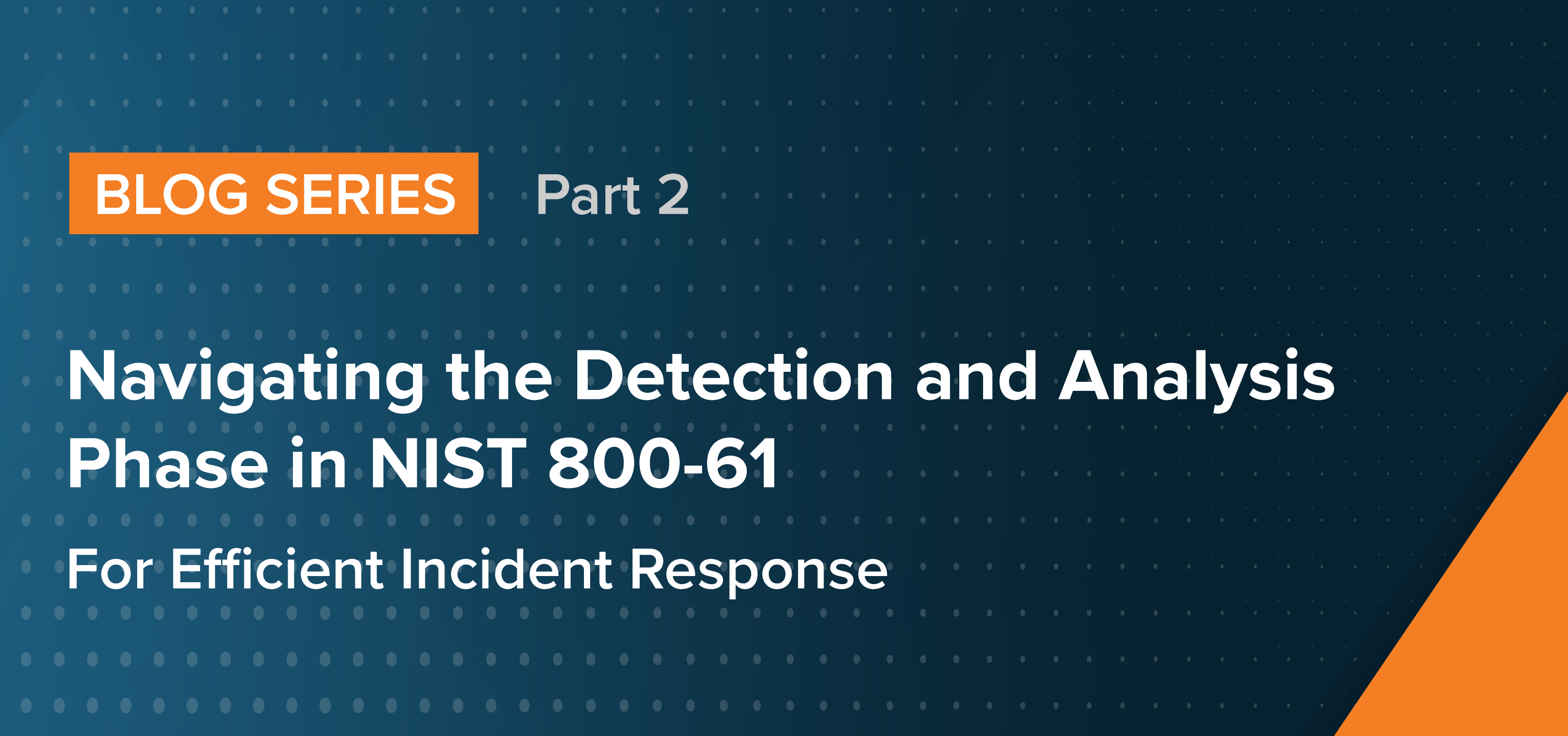Navigating the Detection and Analysis Phase in NIST 800-61 for Efficient Incident Response
Published On: September 9, 2024

In part one of this four-part blogs series, we explored the Preparation phase of NIST Special Publication 800-61, Guide for Computer Security Incident Handling. The Preparation phase lays the groundwork for a successful Incident Response program and is critical for the success of the following phases. In part two, we will look at the Detection and Analysis phase, another critical component of your organization’s overall Incident Response strategy. This blog post delves into the specifics of this phase, highlighting key considerations, takeaways, and action items for organizations aiming to bolster their incident response capabilities.
Understanding the Detection and Analysis Phase
Now that you’ve invested the time and resources into preparing for an incident, with the Detection and Analysis phase we now put that hard work into action. Serving as the initial step towards identifying potential security incidents, this phase involves a range of activities, from the initial detection of potential anomalous activity, to the thorough analysis of potential incidents to determine their impact and scope. Effective detection and analysis is critical for timely and effective response actions, mitigating potential damage and preventing future incidents.
Key Considerations for Detection
Continuous Monitoring: It is important to have a complete picture of all activities taking place within the environment. Implementing comprehensive monitoring of network traffic, system logs, and user activities to identify deviations from normal operations will arm the Incident Response Team (IRT) with the ability to efficiently detect potential incidents.
Anomaly Detection: Utilize advanced tools and techniques, such as SIEM (Security Information and Event Management) systems, to detect unusual patterns or anomalous activity that may be indicative of an incident.
Alert Systems: Set up automated alert systems to notify relevant personnel of potential incidents, facilitating quick action. Keep in mind when it comes to alerting, it is important to eliminate a single point of failure. In the event the primary point of contact is not available, it must be ensured that alerts do not go unaddressed.
Key Considerations for Analysis
Initial Analysis: The IRT must be able to quickly evaluate alerts to determine their credibility and potential impact, prioritizing incidents based on severity. Having institutional knowledge of what events and alerts are considered to be standard for business operations is critical for IRT members when conducting initial analysis.
Event Correlation: Correlate different data points to identify patterns and potential attack vectors. For the organization to have a clear understanding of the scope and impact of the incident, the IRT will need to have the ability to correlate data from all relevant information systems.
Forensic Analysis: Employ forensic tools and techniques to gather evidence and discover the root cause of the incident. Many organizations may not have the resources on staff with expertise in digital forensics. In these scenarios, a third-party forensic analyst should be documented and contacted if required.
Action Items for Organizations
Assess Current Capabilities: Evaluate existing detection and analysis processes and tools to identify areas for improvement. As tactics, techniques and technologies advance, it is critical that monitoring and detection tools can provide complete coverage of all organizational assets.
Invest in Training: Ensure that the incident response team is well-versed in the latest detection and analysis techniques and technologies. Additionally, as enhancements are made to current toolsets, applicable stakeholders should remain in the know for any additional detection and analysis capabilities that may become available.
Implement Advanced Detection Tools: Leverage advanced technologies, such as machine learning and AI, to enhance anomaly detection capabilities. Advanced detection tools are proficient in performing event correlation across various systems, allowing for increased mean time to detect (MTTD) and mean time to respond (MTTR).
Develop a Comprehensive Incident Response Plan: Incorporate detailed detection and analysis procedures into the organization's incident response plan. As part of the incident response documentation, playbooks and checklists are a great way to ensure that response activities remain consistent during the early stages of analysis.
Conduct Regular Drills and Exercises: Simulate incidents to test the effectiveness of detection and analysis processes and the readiness of the response team. IRT members need to be aware and confident of the process and procedures that should be followed during the detection and analysis phase of incident response activities. This phase is critical to ensure that your organization can quickly shift from detection and analysis, to containment, eradication and recovery.
Conclusion
By using the guidance provided in NIST 800-61 for the Detection and Analysis phase, organizations can significantly improve their ability to respond to and mitigate cybersecurity incidents. The key lies in successfully applying advanced detection and analysis methodologies, supported by a commitment to continuous improvement. In doing so, organizations can be confident in an Incident Response program that can withstand the challenges of a dynamic threat landscape.
Click here to read part one, part three, and part four.
For more information on how K logix can enhance your Incident Response program, please contact info@klogixsecurity.com.
Subscribe
Stay up to date with cyber security trends and more

